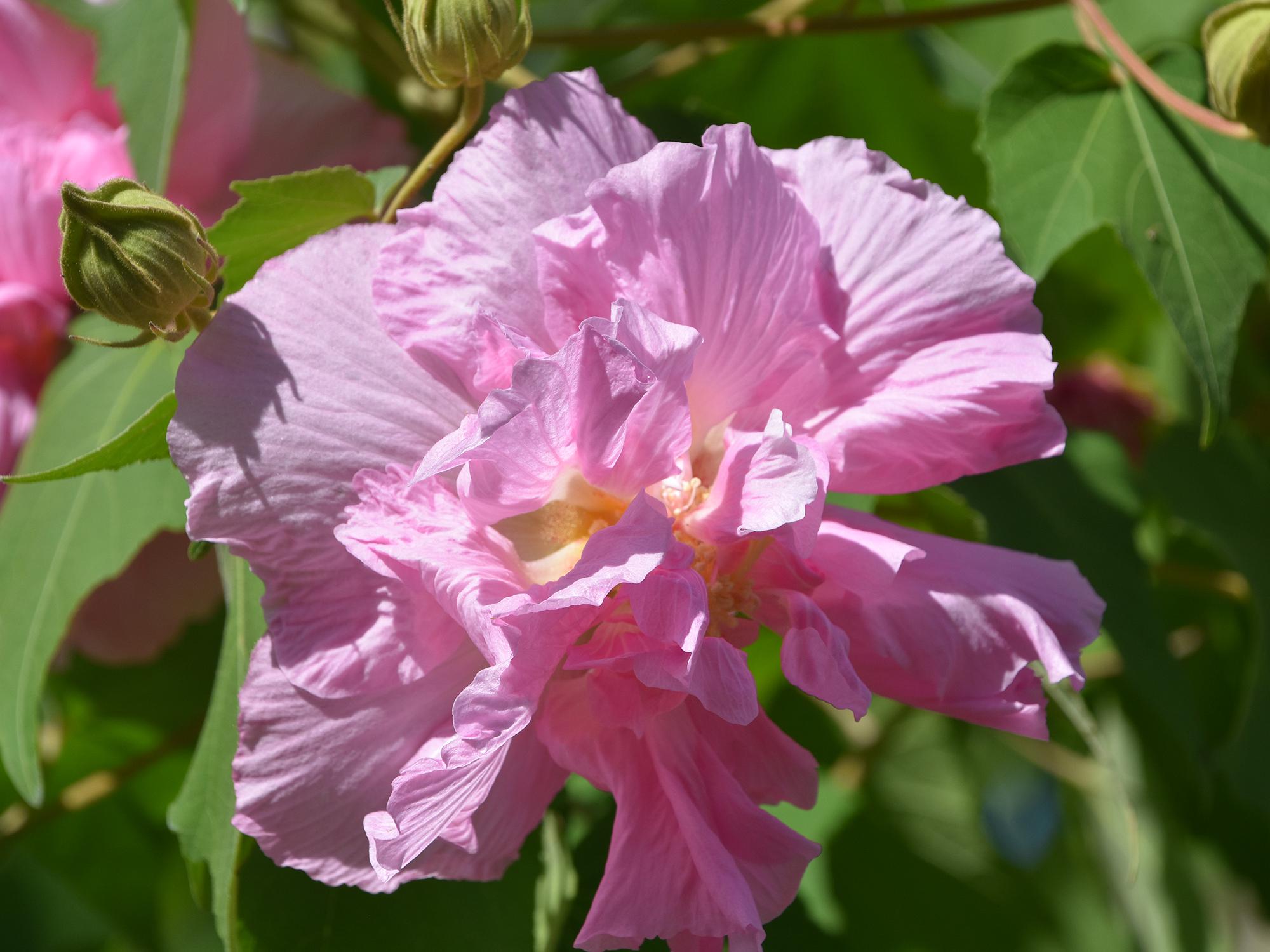Information Possibly Outdated
The information presented on this page was originally released on June 10, 2019. It may not be outdated, but please search our site for more current information. If you plan to quote or reference this information in a publication, please check with the Extension specialist or author before proceeding.
Color-changing hibiscus blooms are worth the wait
The fourth and last column in our hibiscus series focuses on a woody species, Hibiscus mutabilis or confederate rose.
This plant is a green, woody shrub for most of the summer, as it will not start to bloom until late August or early September. But believe me -- it’s worth the wait.
Other common names include cotton rose and cotton rosemallow. Its botanical name, Hibiscus mutabilis, refers to the seemingly ever-changing flower colors. The flowers are huge, and 6-inch blooms in your fall landscape are a sight to behold. Beginning in late summer, the flowers open nearly white, and then turn pink and finally a bright red as they senesce at the end of the day.
The plants produce literally hundreds of blooms per plant. As the old flowers fade, there are new ones opening. On a typical day, there will be loads of flowers in varying shades of white, pink and dark pink.
Confederate rose has the potential to be a really big landscape plant, typically reaching greater than 10 feet tall. This makes a nice specimen plant. In a normal winter, this plant will die back to the ground after a hard frost and will emerge from winter dormancy to shoot up 8 to 10 feet or more the next season.
In the coastal counties, it’s common for our plants to overwinter. At the MSU Coastal Research and Extension Center, we’ve begun to cut our confederate rose plants back to 4 to 6 inches in late winter to help maintain them as smaller plants in our landscape.
It likes a consistently moist planting bed but does not like wet feet. The leaves are large and frequently will start to look a little wilty on our hot Mississippi summer days. But not to worry -- this plant will bounce back by the next morning, as long as you maintain consistent soil moisture.
The flower is a great example of an heirloom ornamental plant. Many of these heirlooms are also called pass-along plants as they were commonly shared between neighbors and friends.
Cuttings can be taken now through the fall season; just be sure to look for newer growth. An old rooting method is to simply place the cuttings in a glass or bucket of water. I’ve read many times that modern gardeners are successful when doing this.
We ran an experiment where we provided cuttings to the public and asked them to try and root them in a glass of water. Out of over 200 cuttings distributed, only one actually rooted. I don’t call this a viable method of propagation.
In my opinion, a better way is to use rooting hormone available at your local garden center. Take a cutting 4 to 6 inches long and scarify (wound) the end closest to the roots. A potato peeler works very well for this. Dip the wounded end in rooting powder, and stick it into a good potting mix. Place the cutting outside out of direct sun, and keep it moist.
For more information and some very pretty video, check out the Southern Gardening TV segment “Confederate Rose”.



